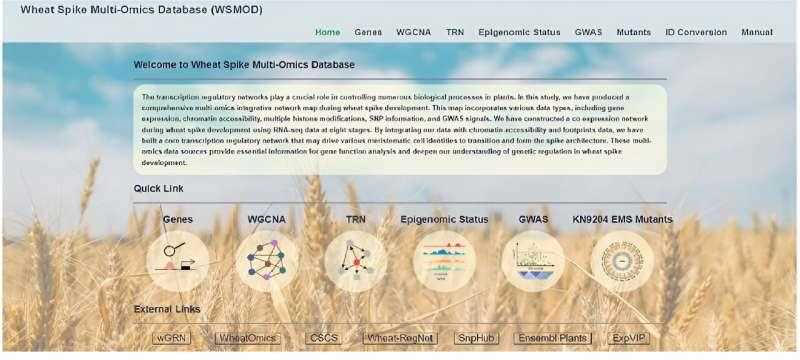By Zhang Nannan
Wheat, a globally important food crop, derives its yield from factors such as number of spikes per unit area, thousand-grain weight and grain yield per spike. Spike shape directly affects spikelet number, grain yield, and overall wheat productivity. Uncovering the key regulators of wheat spike development and investigating their molecular mechanisms holds great promise for precision breeding and molecular improvement of spike morphology.
In a study published in Molecular Plant, researchers led by Xiao Jun from the Institute of Genetics and Developmental Biology (IGDB) of the Chinese Academy of Sciences (CAS) presented an innovative approach. By integrating multidimensional omics, population genetics, and gene function analysis, the researchers outlined a systematic and efficient strategy to identify key regulatory factors in wheat spike development.
Through comprehensive sequencing of wheat spike transcriptomes, chromatin accessibility, and histone modifications at key developmental stages, they delineated the dynamic transcriptional and epigenetic landscape of wheat spike maturation, culminating in the construction of a transcriptional regulatory network (TRN).
By merging multidimensional omics with population genetics, the researchers pinpointed 227 putative regulatory factors influencing spike development, 42 of which have already been implicated in spike formation in wheat or rice.
Phenotypic screening of 61 novel genes using the KN9204 mutant library revealed 36 mutations, including TaMYC2-A1, TaMYB30-A1, and TaWRKY37-A1, altering flowering time or spike morphology. The functional characterization of TaMYB30-A1 underscored the efficacy of the TRN in deciphering gene functionality and its practical utility in wheat breeding initiatives.

At the same time, a comprehensive multi-omics database for wheat spike development, known as WSMOD, was launched. This platform provides researchers with convenient "all-in-one" access to various services, including gene information retrieval, co-expression analysis, TRN prediction, epigenetic map plotting, and mutant library search functions.
Click here to see more...